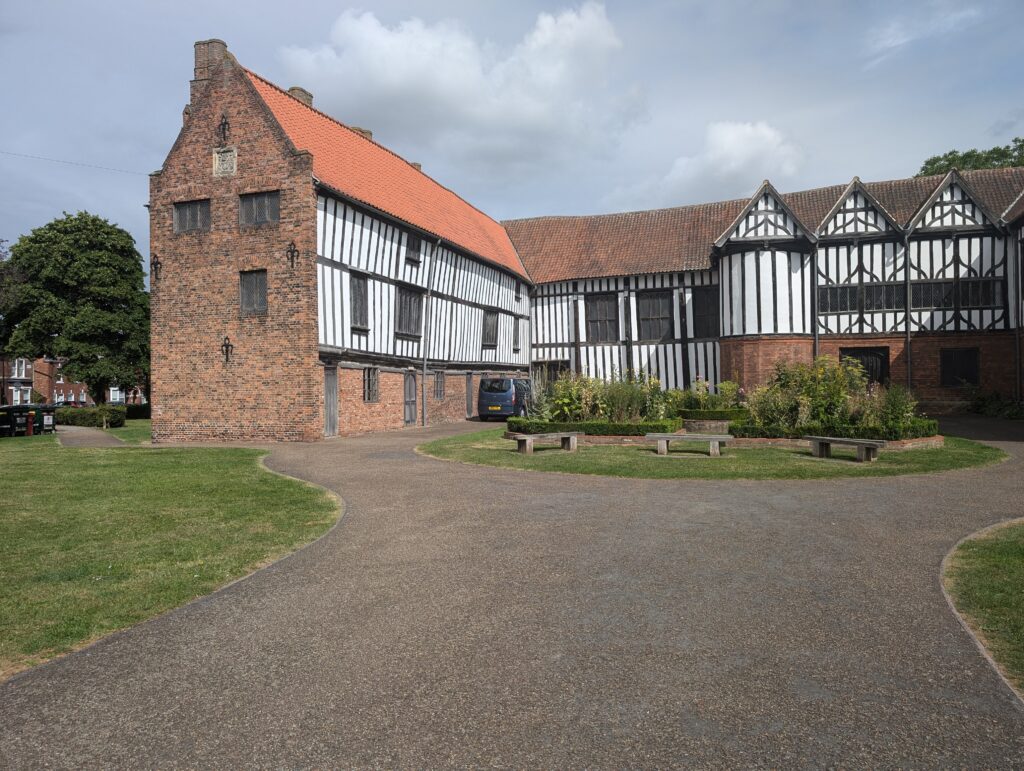
Gainsborough Old Hall is situated in Gainsborough, Lincolnshire. It is over five hundred years old and is the one of the best preserved manor houses of the medieval period in England. It is also my nearest major historical site, since I live in Gainsborough.

In 1460 the hall was build by Sir Thomas Burgh. Incidentally Sir Thomas was one of the people who rescued King Edward IV from the Earl of Warwick, who was being kept prisoner in his castle in Middleham. In 1471 Sir Thomas was the first to rally to Edward IV side when he came to reclaim the throne. Sir Thomas also fought Battles of Barnet and Tewkesbury, as well as later fighting in the Battle of Bosworth.
The first monarch to stay at the hall was Richard III, in 1484. However despite hosting Richard III , it is thought that Thomas Burgh fought on the side of Henry VII at the Battle of Bosworth. The son of Thomas Burgh, Edward, was imprisoned in the Old Hall after being declared a Lunatic. In 1528 Edward died, and was succeeded by his eldest son, another Thomas. Thomas Burgh II had an eldest son, also called Edward who married Catherine Parr who readers may recognise as one of the wives of Henry VIII. Edward and Catherine stayed at the Old Hall until they were granted their own manor in the nearby Kirton-in-Lindsey.
Henry VIII would visit Gainsborough twice, in 1509 and 1541. Catherine Howard, with whom Henry visited in 1541 was accused of affairs in both Gainsborough and nearby Lincoln and would go on to be executed. Catherine Parr had by this time been widowed twice, with Edward Burgh dying in 1533 and would go on to become Henry VIII sixth wife.
Thomas, the fifth Lord Burgh would die without an heir, and in 1596 Gainsborough Old Hall would be sold to William Hickman, a merchant from London. He would make many improvements to the Hall, especially in the East Wing. The Hickman family would play a prominent role in developing Gainsborough, with a prominent hill in Gainsborough going on to be named ‘Hickman Hill’.
In 1720, on the edge of town at Thonock, a new manor was built and the Old Hall became unoccupied with it being used for a variety of purposes, but staying in the family.
The Old Hall has changed little over the years, being principally Timber framed giving it a black and white stripped appearance. The on the north-east is a brick tower and a great view of the town can be found at the top, if you’re willing to climb the steps as I did as a teenager. The tower is said to be haunted by the Grey Lady, but I never found any spooky goings on. The kitchen is considered possibly the most complete medieval kitchen in England.

From 1949 the house was looked after by a volunteer group, the Friends of the Old Hall. They saved the building from demolition and first opened it to the public. The then owner, Sir Edmund Bacon gave it to the nation in 1970. After being run by Lincolnshire County Council, it is now owned by English Heritage and is open to the public as a museum. It is listed as a Grade I building and the Friends of the Old Hall provides volunteer guides and other expertise.
